If you haven’t heard of the Beta Alp, don’t be embarrassed. Neither had we, not until Beta’s Rodney Smith recently asked Cycle News if we’d be interested in reviewing one. A few days later, I was ripping around on the Alp 4.0 in the California desert.
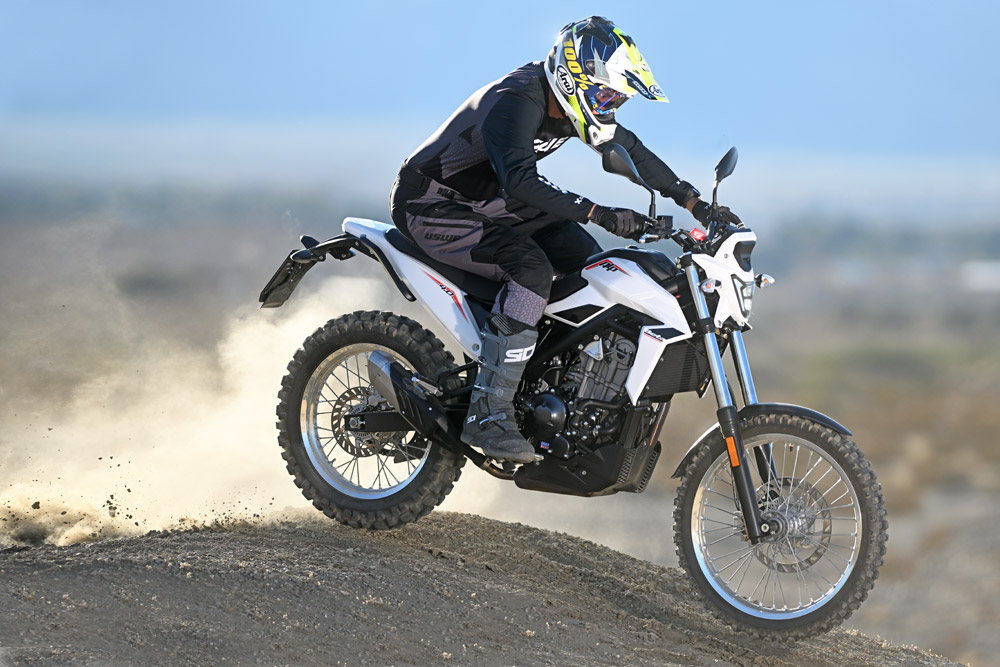
So, what’s an Alp? First, the Alp isn’t new. Variations of the Beta Alp have been around for 20-plus years, but not in the U.S., mostly in Europe and other countries. Most of the bike is built in Italy, Beta’s country of origin. Up until 2023, the Alp was powered by a dry sump, air-cooled, carbureted Suzuki DR350 motor. Beta currently markets the Alp as an affordable dual sport/ADV 50-50 motorcycle in the U.S. It joins the rapidly growing list of enticing small-bore “mini” ADV bikes that are entering the market these days.
VIDEO | 2026 Beta Alp 4.0 First Ride Test
The Alp comes in two flavors: the Alp 4.0 and now the new Alp X version. The Alp 4.0 is tailored a little more towards off-road riding versus the more street-going X. We got to review the 4.0, which features an 18/21-inch wheel configuration—the Alp X boasts 17/19-inch wheels—and different bodywork. Both models have a low front fender, but the X has a rear fender that travels up and down with the wheel, which is the quickest way to tell them apart.
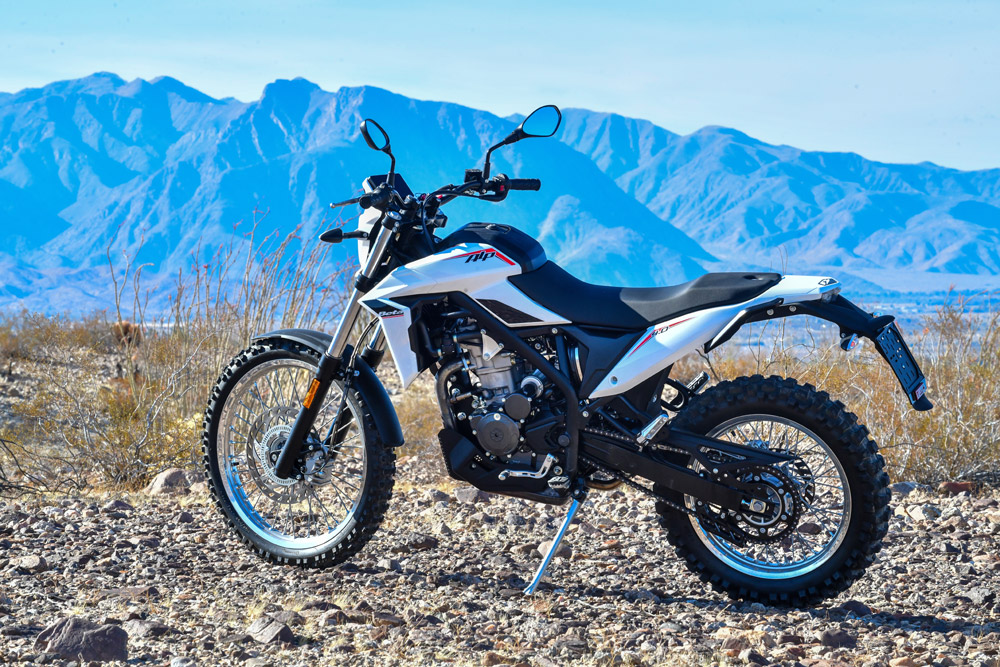
Based on cubic displacement and retail price, the Alp has the Honda CRF300L Rally positioned squarely in its gunsight. Literally, only a few dollars separate the two: $6490 for the Alp and $6499 for the Honda. Another motorcycle you could compare the Alp to is the 450cc Royal Enfield Himalayan, which starts at $5799. You could even match it up to the soon-to-be-available 2025 KTM 390 Adventure R with its $6999 price tag. And you have the expected BMW F 450 GS. However, both the KTM and BMW look to be more performance-oriented than the Alp, Rally or the Himalayan.
The Alp’s current engine, which was designed in Italy and built in China, is a six-speed 348cc DOHC liquid-cooled single that churns out a claimed 35 horsepower. It is equipped with fuel injection and fitted with a down-swept exhaust pipe with a slick-looking aluminum muffler. Beta says this engine has been in testing for more than five years until the final specifications were determined in 2024. The engine was designed for “durability, limited vibration, as well as optimum torque and power,” says Beta.
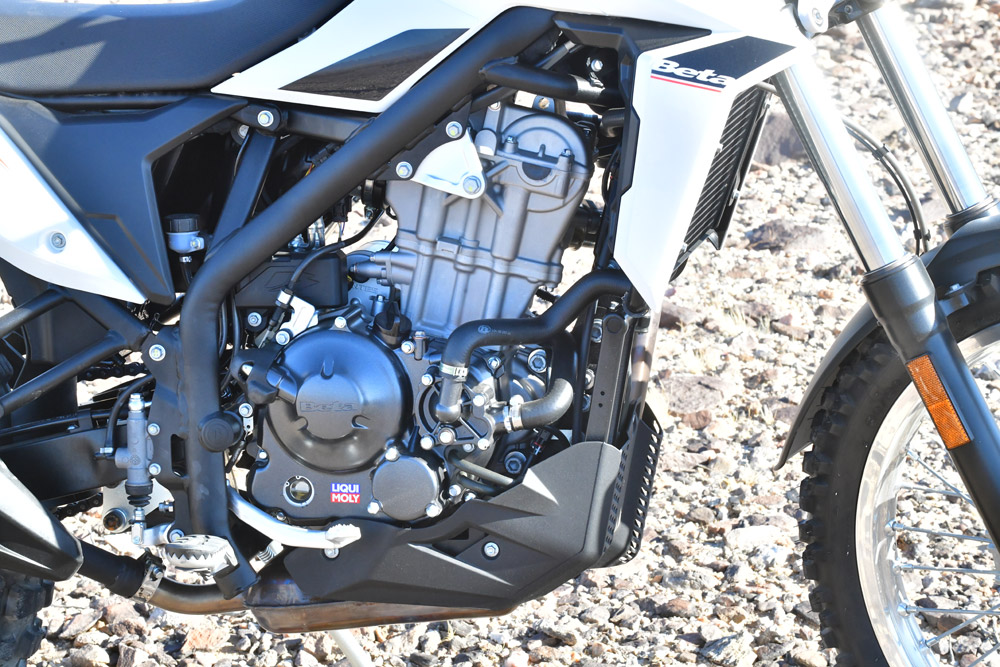
The Alp’s steel chassis features an Ole fork and an unbranded single rear shock that offers approximately seven and a half inches of wheel travel. The front brake is from Nissin, while the rear brake is stamped Beta.
The Alp boasts advanced features such as a TFT screen, dual engine maps, Bosch antilock brakes and full LED lighting. The headlight looks straight out of a science-fiction movie, but it blends in nicely with the rest of this edgy-looking motorcycle. The Alp has a large seat, spacious enough for a passenger who will appreciate the factory-attached passenger pegs.

In comparison to the 300 Rally, the Alp has approximately 2.5 inches less wheel travel, a half-inch shorter wheelbase at 56.7 inches, a one-inch lower seat height at 34 inches and weighs 27 pounds less at 308 pounds (that is according to the manufacturer’s specs). It also holds less fuel, 2.9 gallons versus 3.4 gallons.
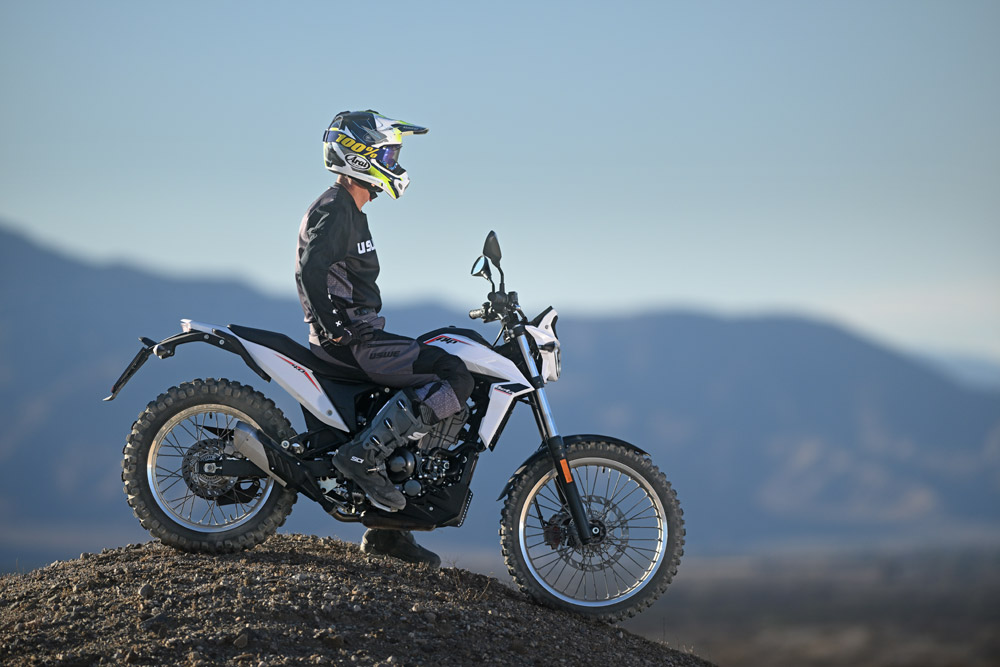
Making Dust | 2026 Beta Alp 4.0 Review
The Alp couldn’t be easier to ride with its low seat height, its low center of gravity and its user-friendly motor. The motor is remarkably torquey for a 350 and makes more power overall than you’d think—at least, I thought so. Fueling is clean but not perfect, as there is some hesitation at very low rpm right when you first crack the throttle, but it’s only noticeable when you’re not moving. Once rolling, throttling is good and consistent, and I never experienced any stalling. Redline is approximately 9500 rpm, but that’s not where it likes to be ridden. Not even close.
You can easily switch maps via a slide button on the left handlebar, selecting between “Road” and “Off-road,” but the differences between the two maps are very subtle, bordering on not noticeable at all. But we’re dealing with just 35 horses here. There is nothing “aggressive” about the Alp’s power delivery, but there’s enough responsiveness to satisfy most people, regardless of their skill level.
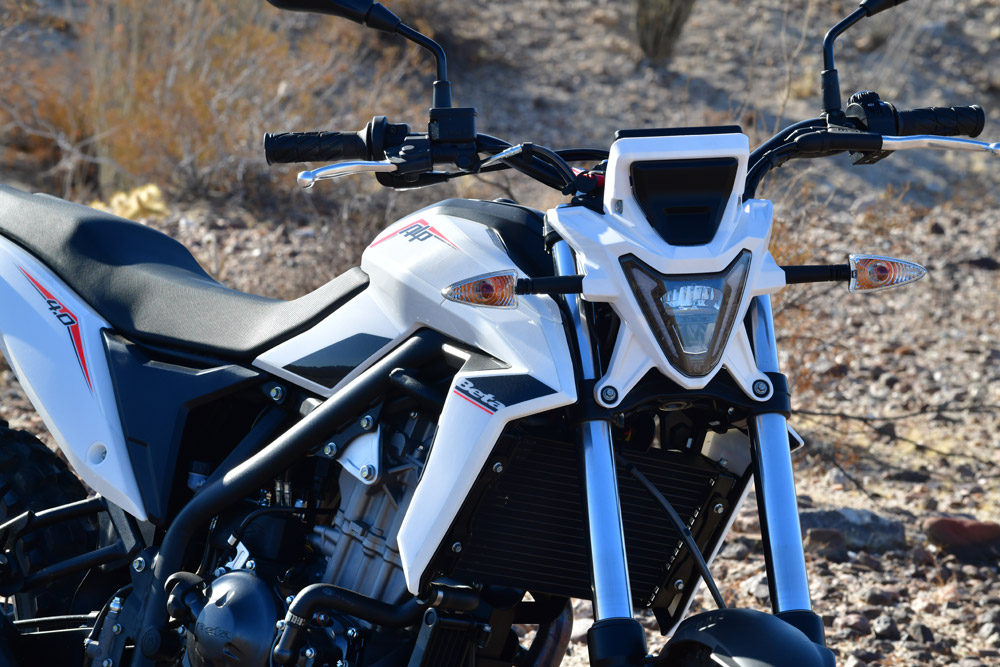
Having just seven and a half inches of wheel travel limits how aggressively you can ride the Alp on the dirt, but the Alp’s suspension works surprisingly well up to that point. You have no adjustments other than the rear spring preload, but for the type of riding that the Alp is intended for, the suspension is more than sufficient. And kudos to Beta for fitting the Alp with wide and grippy footpegs. They do come fitted with rubber vibration-damping pads but can be easily removed. You’ll want to do that.
Most of my riding on the Alp was on dirt, but the few miles I spent riding the bike on pavement went well. It didn’t feel like I was a roadblock in any way; it kept up with the flow of traffic (up to approximately 65 mph) just fine and without complaint. Vibration is easily manageable, and it handles quite nicely on the pavement. So, riding to the dirt trails shouldn’t be painful for anyone, but the shorter, the better. Anything, however, is better than having to load a bike into a truck or van and haul it to the dirt.
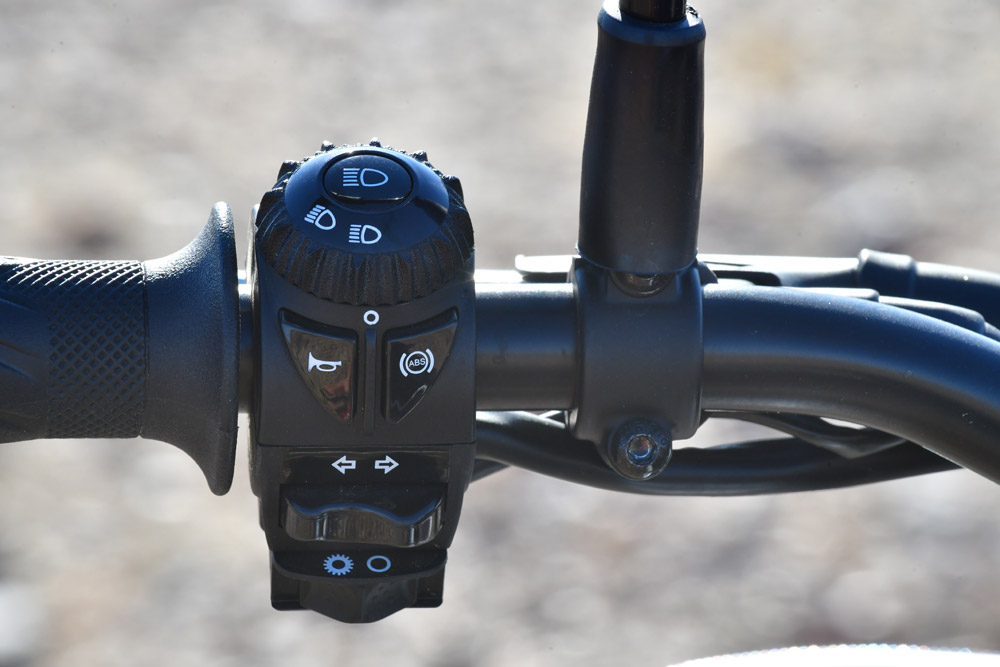
The Alp’s brakes, which are linked, perform well for casual riding, which is precisely what the Alp is designed for. When you transition to dirt, you’ll want to turn off the rear ABS, which is accomplished by pressing a button positioned just above the map switch. The process is a little involved, though; you must turn off the motor, start it up again, press the button at just the right time, and hold it for a bit. If you do all these things just right, mission accomplished. If not, try again. It takes some getting used to, but that’s the fun part of living with any bike: learning how to outsmart their quirks.
The Vee Rubber semi-knobby tires, which are manufactured in Thailand, performed well in the dirt, but only after I experimented with the tire pressure a bit. I noticed that the front tire was sensitive to that.
The large TFT dash is a nice touch and offers all the usual pertinent information, but I never noticed the tiny blinking red light that was trying to tell me I was about to run out of gas. Luckily, the Alp pushes very well, and I was only a quarter mile from home. So, maybe readability could be a little better. Why I waited until after I got home to check to see if it had a reserve valve (which it does!) is unbeknownst to me. Beta claims the Alp’s 2.9-gallon fuel tank will carry you approximately 160 miles, but in reality, expect around 130.
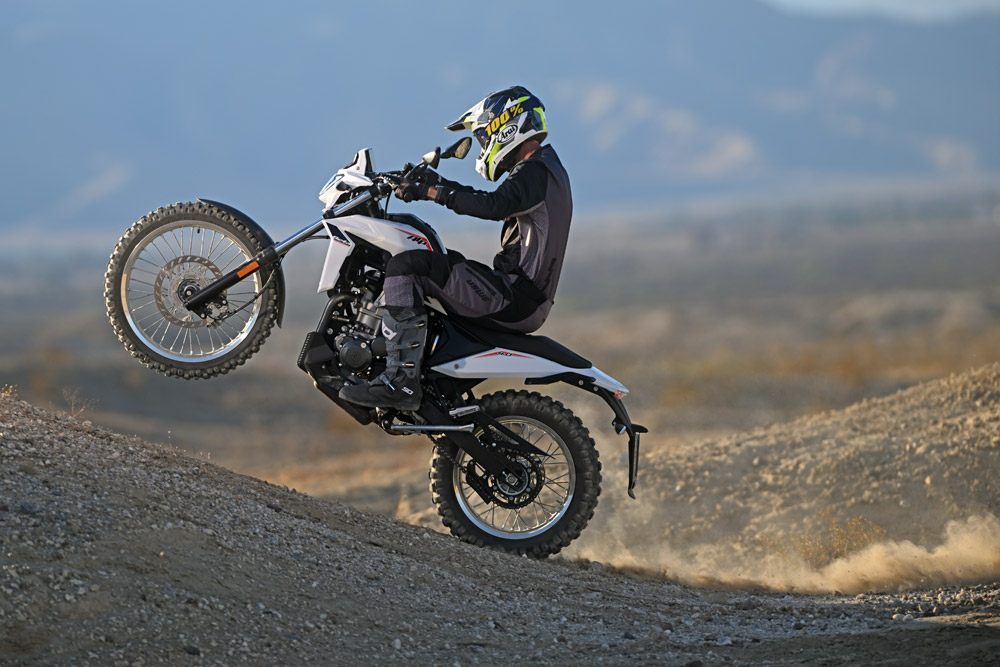
If you usually ride a Japanese bike, the Alp’s handlebar switchbox may take some getting used to. Operating features like the high-low beam dial, blinkers, and horn aren’t exactly “traditional,” but those are some of the small nuances that make the Alp unique and cool. However, I don’t have much love for the tiny fuel filler cap. Additionally, it’s a bit challenging to access and unscrew beneath its flimsy locking flip-up cover.
The large and comfy seat is easily removable and lockable.
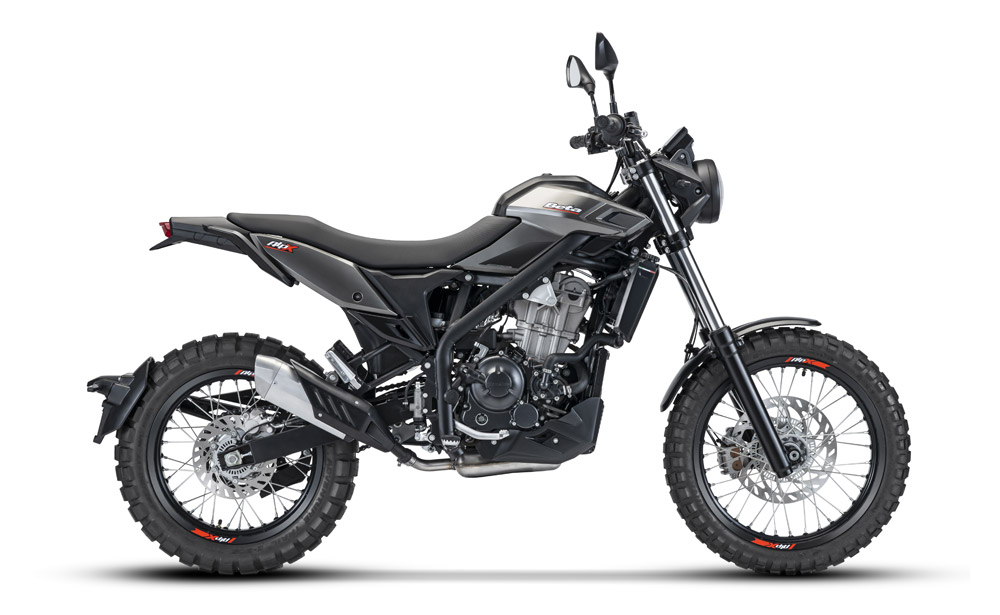
Overall, I found the Alp to be very enjoyable, and anyone can ride it with confidence. Its low seat height, unintimidating yet gutsy little motor, and decent suspension come together to create a fantastic, easy-to-ride sit-down motorcycle for exploring the great outdoors while also being excellent for around-town errands during the work week. Beta promises to provide many accessories for the Alp, including luggage racks. It also comes with a two-year, unlimited mileage warranty. However, if you want one, you should act quickly and order yours because the Alp 4.0 (and the X) will be offered in limited numbers, and depending on how many they bring in, I wouldn’t be surprised if they sell them all. The Alp is expected to be available in June.CN
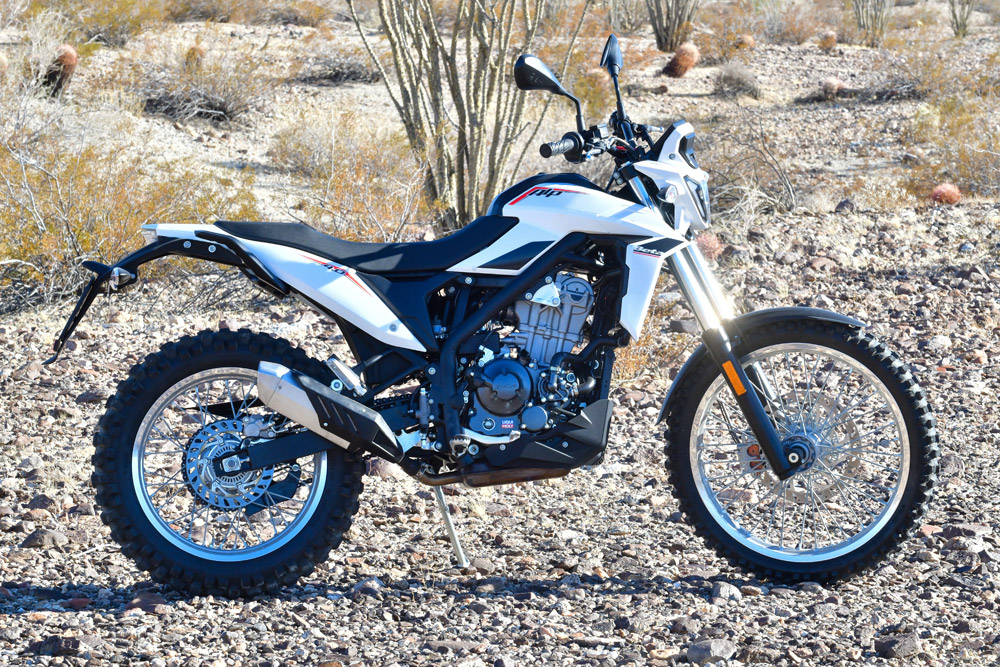
2026 Beta Alp 4.0 Specifications
| MSRP | $6490 |
| Engine Type | 4-stroke, single |
| Valvetrain | 4-valve, DOHC |
| Cooling System | Liquid |
| Bore x Stroke | 84.5mm x 62mm |
| Displacement | 348cc |
| Compression Ratio | 12.3:1 |
| Ignition | Electronic |
| Lubrication | Pressurized |
| Fuel System | EFI w/44mm throttle body |
| Clutch | Wet, multi-disc, spring |
| Transmission | 6-speed |
| Final Drive | O-ring chain |
| Frame | Steel, perimeter |
| Front Suspension | Telescopic fork, 43mm, non-adj. |
| Rear Suspension | Single shock, linkage, preload adj. |
| Front-Wheel Travel | 7.3 in. |
| Rear-Wheel Travel | 7.7 in. |
| Front Brake | 290mm, single floating disc |
| Rear Brake | 220mm, single disc |
| Front Wheel | 21 in. |
| Rear Wheel | 18 in. |
| Tires | Vee Rubber, Adventure Knobby |
| Wheelbase | 56.7 in. |
| Seat Height | 34 in. |
| Ground Clearance | 10.6 in. |
| Weight (dry, claimed) | 308 lbs. |
| Fuel Capacity | 2.9 gal. |
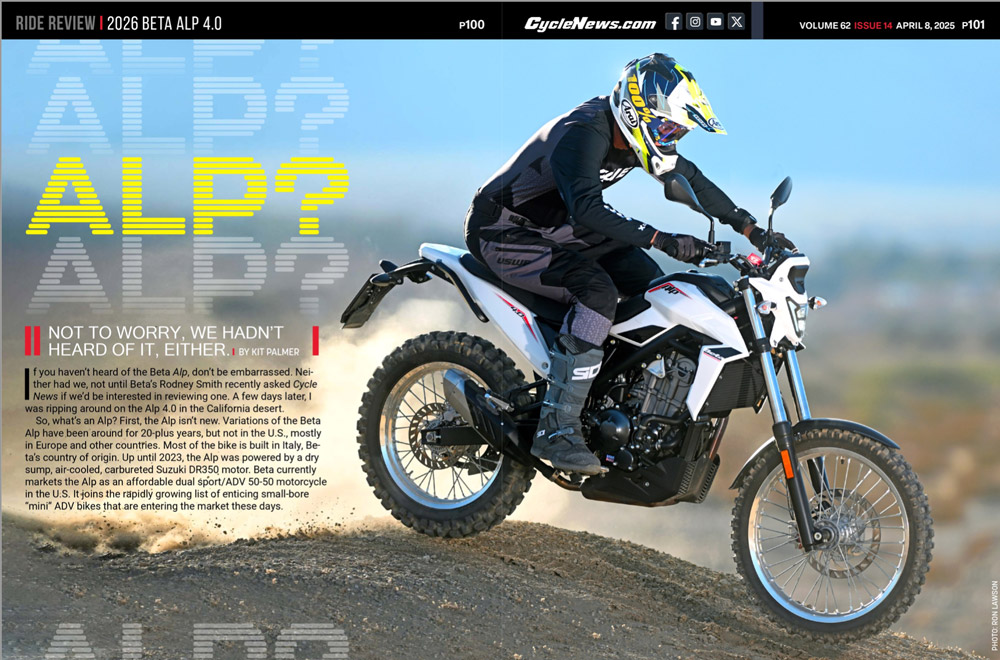
Click here to read the 2026 Beta Alp 4.0 Review in the Cycle News Digital Edition Magazine.
Click here for the latest Cycle News Dual Sport motorcycle reviews and news.
Click here for the latest Cycle News Off-Road motorcycle reviews and news.
